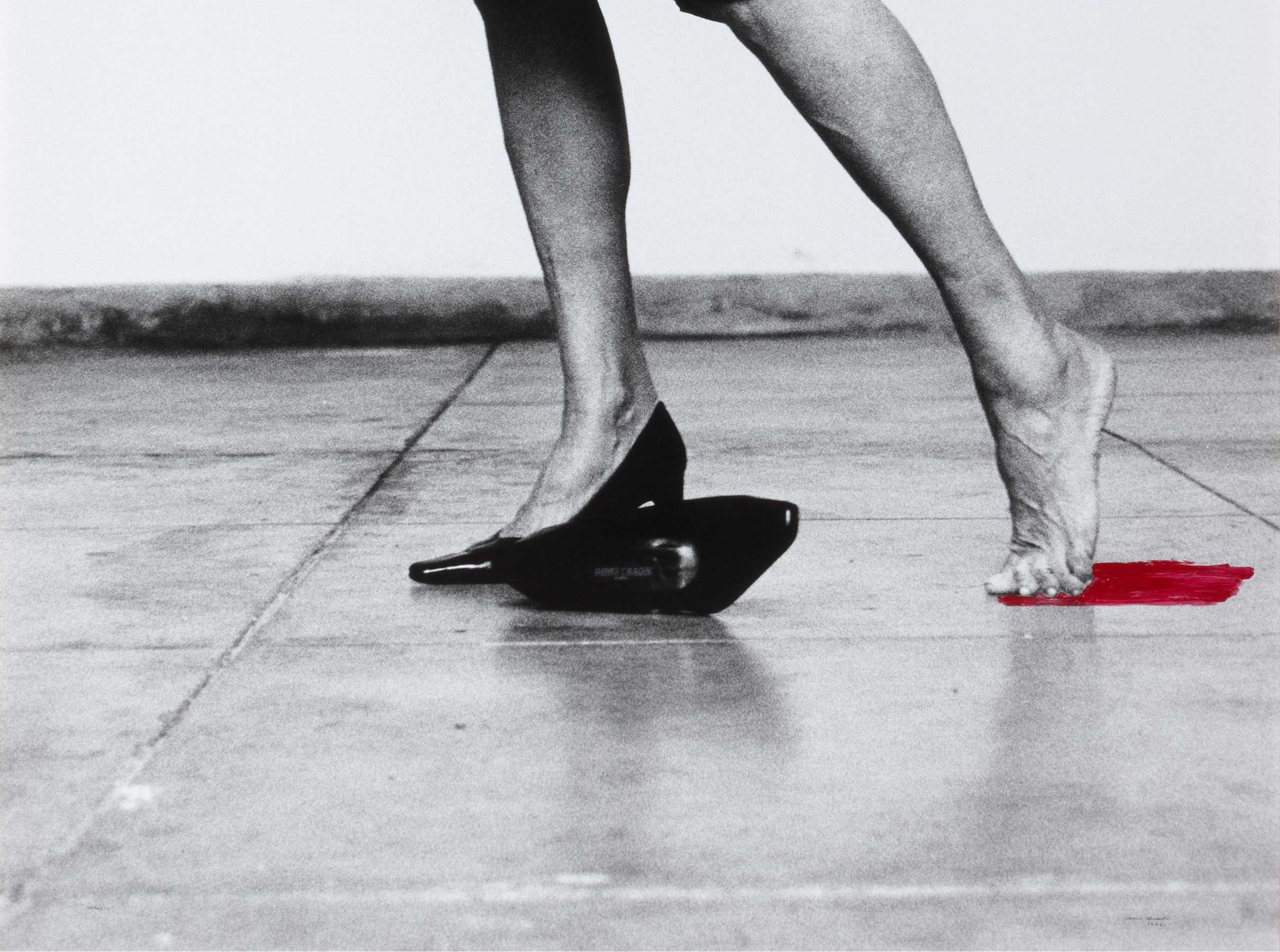Sin título [Untitled]
- 2009
- Black-and-white photograph on baryta paper toned with sulfide
- 60 x 50 cm
- Edition 2/15
- Cat. F_463
- Acquired in 2021
- Observations: Ed. 2/15
Employing a sort of surrealist poetics in which objects are presented unadorned and plainly to evoke a sense of estrangement, Chema Madoz’s photography reveals openly the fiction of its staging, which involves the alteration or juxtaposition of objects. His works begin with recognizable signifiers that ultimately generate new meanings through visual metaphors. Madoz’s artistic imaginary is nourished by both visual poetry such as the greguería (aphorisms) of Ramón Gómez de la Serna and the assisted readymades of Marcel Duchamp.
In this piece, the image resulting from the combination of two elements carries a whiff of the tautological, for at work here is not the transformation of one object into another by displacement or the fusion of two objects into a third. On the contrary, the viewer’s gaze swings (“pendulates,” one might say) between two foci that share the same name and function: one clock and another clock, a wall clock turned into an hourglass and vice versa. It seems that the passage of one time (one of the two at play in the work) has prevented the progress of the other, as the pendulum has been stopped by the weight of the sand from the other clock (could they both be the same?). The fact that the sand is sloped transports this mixed object into the realm of landscape: the natural curvature of the sand behind the glass evokes an encapsulated dune. Recently, as an introduction to his solo exhibition “En torno al tiempo” or “Regarding Time” (Centro Cultural Gran Capitán de Granada, 2023), Madoz displayed the modified object that is central to this work, thus highlighting the roots of his process in the manipulation of the everyday, while also clearly distinguishing between the physicality of the objects that populate his studio and their entry into an aestheticized, timeless, and dreamlike state of some black-and-white photography.
The theme of time and the presence of the clock as a modified object or as a victim of ironic appropriation are recurring motifs in Madoz’s work. In this regard, his book Tempo Madoz, is notable, with its introduction by Arturo Leyte revealingly titled: “Can Time Be Photographed?” In other works, time is more subtly present through its imaginary effect on an object, often defying temporal and physical laws, which do not seem to have left their expected impression on the photographed scene. In terms of the literal object of the clock and its components (hands, dials, movements), numerous photographs by Madoz, while not constituting a series, do end up spinning a thematic thread. These include images such as Reloj de arena or Hourglass (1997), in which an ant appears to have fallen with the last grain of sand, completing its futile task of building an anthill; Reloj lápida or Tombstone Clock (2004), in which the sand, with the placing of a small cross, becomes a modest grave; and Sin título or Untitled, where the pages of a partially open book form a myriad of hands marking the time on a clock.
The latter image brings together the two objects featured in the two photographs by Madoz held in the Colección Banco de España: the first is the double wall clock and hourglass in this text; the second, Sin título (2011), shows four books by Carlos Fuentes that have been violently punched out to spell the word “BOOK” – one of these volumes is El mal del tiempo (The Affliction of Time). Thus, the artist’s body of work underscores the presence of time in the Colección Banco de España, from its iconic façade clock to the extensive holdings of other types of clocks, which find an ironic counterpoint in the suspended time of Madoz’s photography.
Other works by Chema Madoz

![Sin título [Untitled]](/f/webca/INF/assets/img/fff.png)